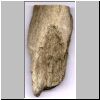 |
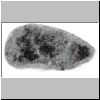 |
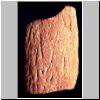 |
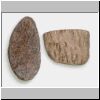 |
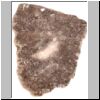 |
The discovery of a splendid specimen of petrified wood in a sand-pit at Kalkar (Germany) by Hans de Kruyk inspired us to our investigation of Tempskya. Click at the first and the second photo to view this fossil.
The stems decayed in the living tree from the bottom upward, and downward growing roots filled up the space left by the stems. This is the reason there the lower part of the trunk lacks stems. The specimen found by Hans de Kruyk, showing exclusively roots, is therefore coming from the lower part of a trunk.
The form of the European specimens is, contrary to American ones, in most cases more or less elliptic, which is probably due to the compression of the trunk during the process of fossilisation.
In Europe two types of Tempskya are found. The first one is the
type described above, completely existing of roots. On a polished transverse
section numerous very small, circular roots appear (second photo). At the
outside a mass of bent thin tubes is sometimes visible (first photo).
It comes from the lower part of the trunk.
The second type is often an elliptic disc in which the stems (diameter
2 - 10 mm) are striking (third photo). Sometimes the tiny roots are also
visible. The preservation is mostly not good enough to make thin sections.
Sometimes remains of stems and roots can be made visible by sawing and polishing.
Tempskya is found in western Europe mainly in eastern erratics, but
the source of the fossils is not known. It is assumed that partly they
come from the Wealden formation in the area of the river Deister near Hannover
in Germany.
Click at the photos for more information
 |
 |
 |
 |
 |